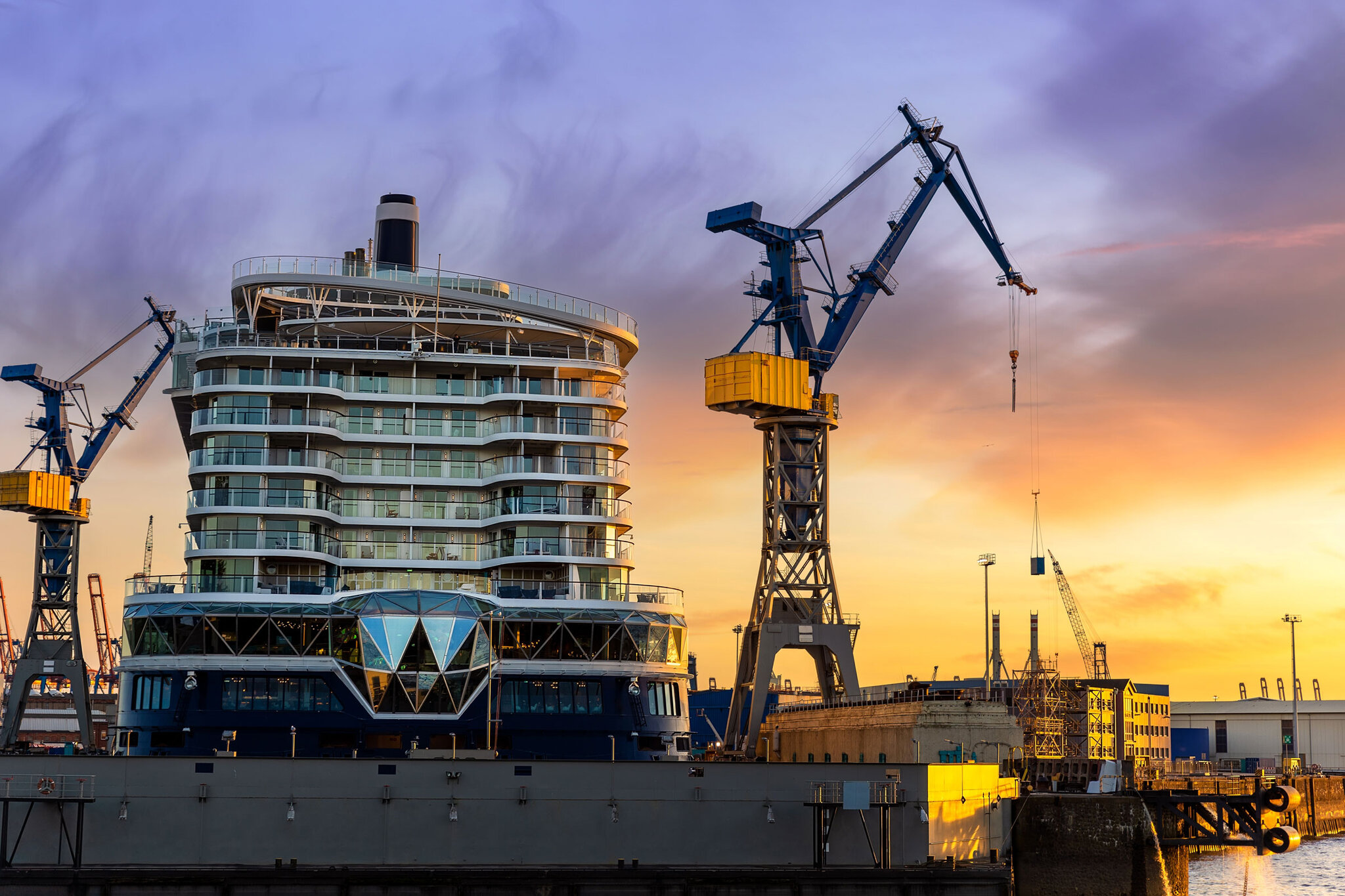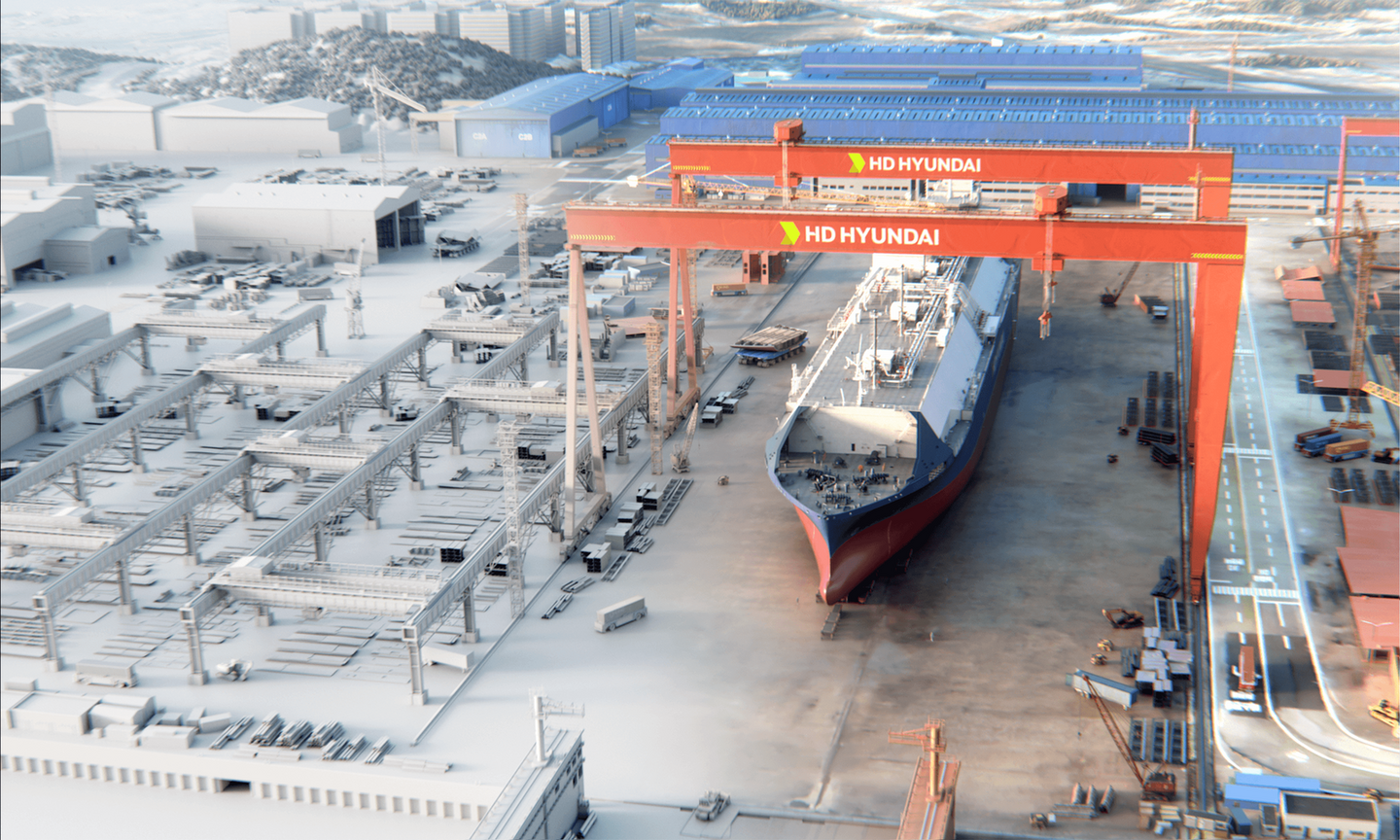Feature
Automatic pilot: how is shipbuilding embracing automation?
While the sector has traditionally lagged behind other manufacturing sectors, Keri Allan looks into the new ways that automation is being implemented in the shipbuilding industry.

Shipbuilding is an industry where automation is particularly challenging. This is partly due to the scale of the vessels being built, but also because of the wide variations in design and construction methods.
Shipbuilding is much further behind in implementing automation compared to mass production industries such as the automotive and aviation industries, which have more heavily invested in the use of construction line robotics.
In shipyards, the use of automation so far has mainly been confined to the design process and early building stages. Panel and plasma cutting machines have levels of automation in terms of welding, but when it comes to assembling ships in dock, this is still a heavily manual process.
“It’s not as straightforward to automate a ship production line as that for a car, but automation is being used for things like logistics, to maximise dock space, rather than consistency of construction processes,” explains Duncan Duffy, global head of technology, electrotechnical systems, and digitalisation at Lloyd’s Register.
It’s not as straightforward to automate a ship production line as that for a car.
“Furthermore, almost every shipyard has some computer-aided design (CAD) capability, which automates the checking of a design against set requirements and improves the quality of the design information produced, but how they transfer that into production may differ.”
While uptake of automation within shipbuilding has been slow, there is interest. However, as Duffy explains, the introduction of automated solutions is selective.
“Nobody’s currently investing the very large sums it would take to do that kind of end-to-end digitalisation,” he says, while also noting that the level of automation in use varies depending on the region.
“Korea is investing quite heavily in automation, but they’re still not end-to-end connected digital systems; they’re individual systems with some manual or semi-automated processes with data transferred between them,” he says.
“While it’s been a while since I visited shipyards in China, I suspect they’re moving to follow this trend, because they’re facing the same global challenges as elsewhere – to get production time down to increase their capability to build.”
Can automation answer the labour deficit?
One of the key drivers of automation in the shipbuilding industry is to address the decline in production efficiency due to a shrinking labour force, and particularly a decrease in skilled workers. In this context, robotics and AI can offer a viable path to improving productivity.
“If we were to compare them to humans, robots serve as the body while AI functions as the brain. Until recently, most efforts focused on developing robotic hardware, but with advancements in AI, robots are becoming more intelligent and capable of performing increasingly complex tasks,” says Dongju Lee, VP of HD Hyundai’s manufacturing innovation laboratory and advanced research centre.
“Applying conventional industrial robots in shipyards has been challenging, due to their unique environment where welding must be performed while traversing large structures. But recent advancements in collaborative robots and AI have enabled the development of flexible automation systems that can be effectively applied in these environments. As a result, automation rates are increasing rapidly.”
Laying the foundations for a digital shipyard
On the AI front, research is underway on AI agent-based production planning systems, while tools such as Siemens’ Plant Simulation are being used to develop discrete event models that simulate and validate shipyard processes.
To establish a next-generation manufacturing platform that seamlessly links design and production, HD Hyundai is evaluating the adoption of commercial CAD and product lifecycle management (PLM) solutions from Siemens and Dassault Systèmes.
The ultimate goal is to build a digital twin shipyard by establishing an integrated data-driven management framework centred on PLM, spanning from design to planning and production operations.
“In the development of robot-based automation systems, we’re using simulation software to pre-verify whether the proposed robotic hardware configurations are suitable for actual operations,” says Lee.
“Depending on the robot type, we use either dedicated simulators provided by robot manufacturers or general-purpose simulators that support multiple brands and models. Looking ahead, we’re also developing and applying hardware and software that enable bidirectional data communication to support the full-scale deployment of a digital twin environment in the shipyard.”
Next-gen welding
Clear benefits to implementing robotic welding systems – in terms of work speed, coverage and weld quality – have already been proven. Compared to conventional semi-automated methods using welding carriages, the range of welds that can be automated in sub-assembly and panel assembly processes has expanded from approximately 70% to 90%, according to Lee.
As a result, the volume of post-processing tasks – such as residual welding and defect correction – has been reduced by 20%, which Lee says enables “more efficient manpower allocation”.

HD Hyundai is evaluating the adoption of commercial CAD and PLM solutions. Credit: Siemens
Furthermore, with advances in sensor hardware and AI, automation is evolving beyond simple repetitive tasks, with today’s systems capable of detecting and correcting deviations in real time.
In the past, welding was performed by mechanically tracking the weld line using fixed current and voltage settings. Now, using sensors and AI, the system can recognise the condition of the weld seam and simultaneously adjust the current, voltage and travel speed during operation.
“This real-time adaptability significantly reduces defects and rework, making sensors and AI essential components in the design and implementation of modern automated welding systems,” says Lee. “Their integration is no longer optional, but a fundamental requirement for achieving high-efficiency, high-quality shipbuilding automation.”
Expanding automation
To achieve full automation in ship block production, HD Hyundai is currently planning and designing an integrated automated production line that connects nesting, fit-up, and welding processes, which the company anticipates will be fit for implementation within the next few years.
In addition, HD Hyundai is also researching ship painting automation, which is widely regarded as one of the most complex areas to automate.
“Ultimately, our goal is to build an intelligent, autonomous operating shipyard,” says Lee.
Shipbuilding is at a crossroads. The rise in automation within the industry is being driven by necessity, in part due to an ageing workforce and a struggle to recruit and retain young talent. As labour shortages intensify and global demand for vessels continues, the shipbuilding sector will likely need to move toward a more digitised, automated future.
HD Hyundai and its peers are showing what’s possible when AI, robotics, and advanced simulation are embraced. If these technologies continue to mature and scale, the dream of a smart shipyard, where design, production and quality assurance are seamlessly linked, may finally set sail.